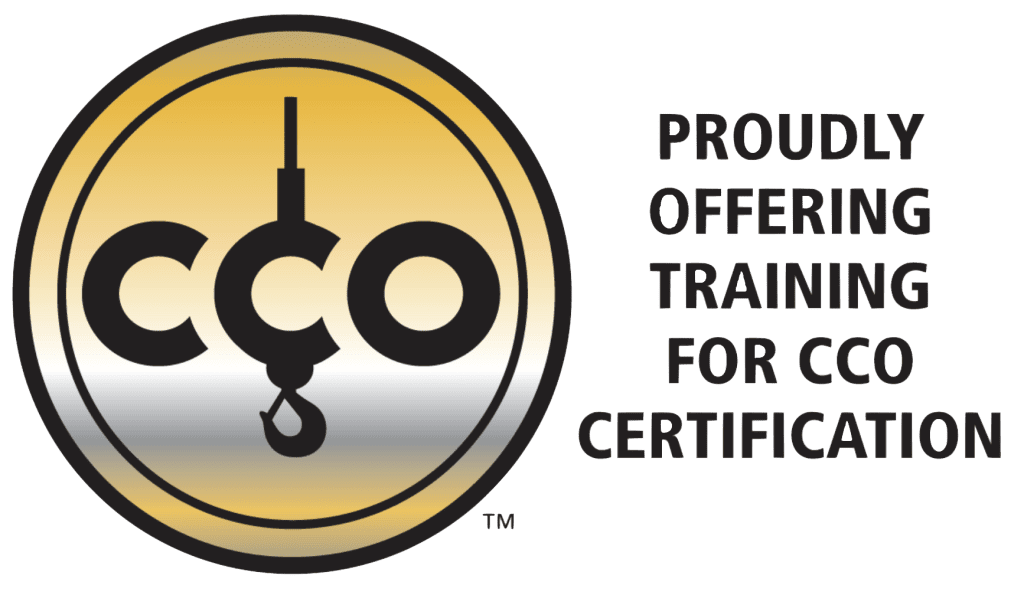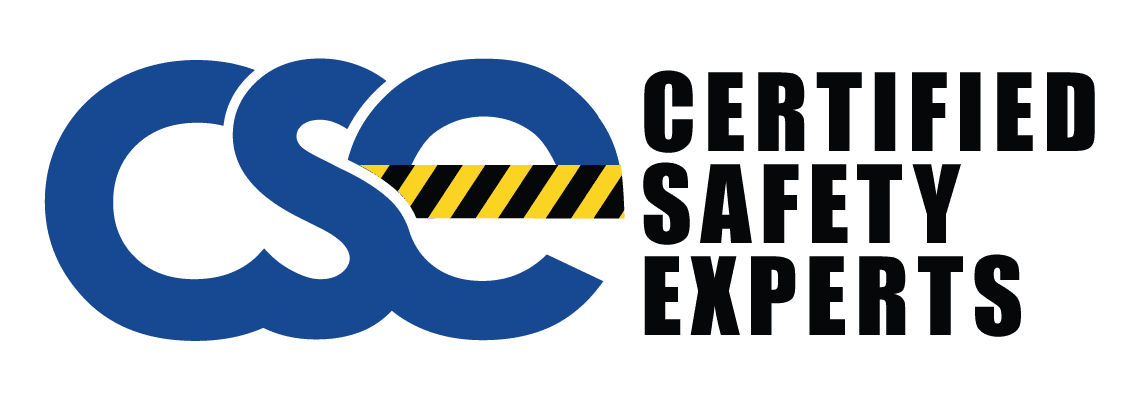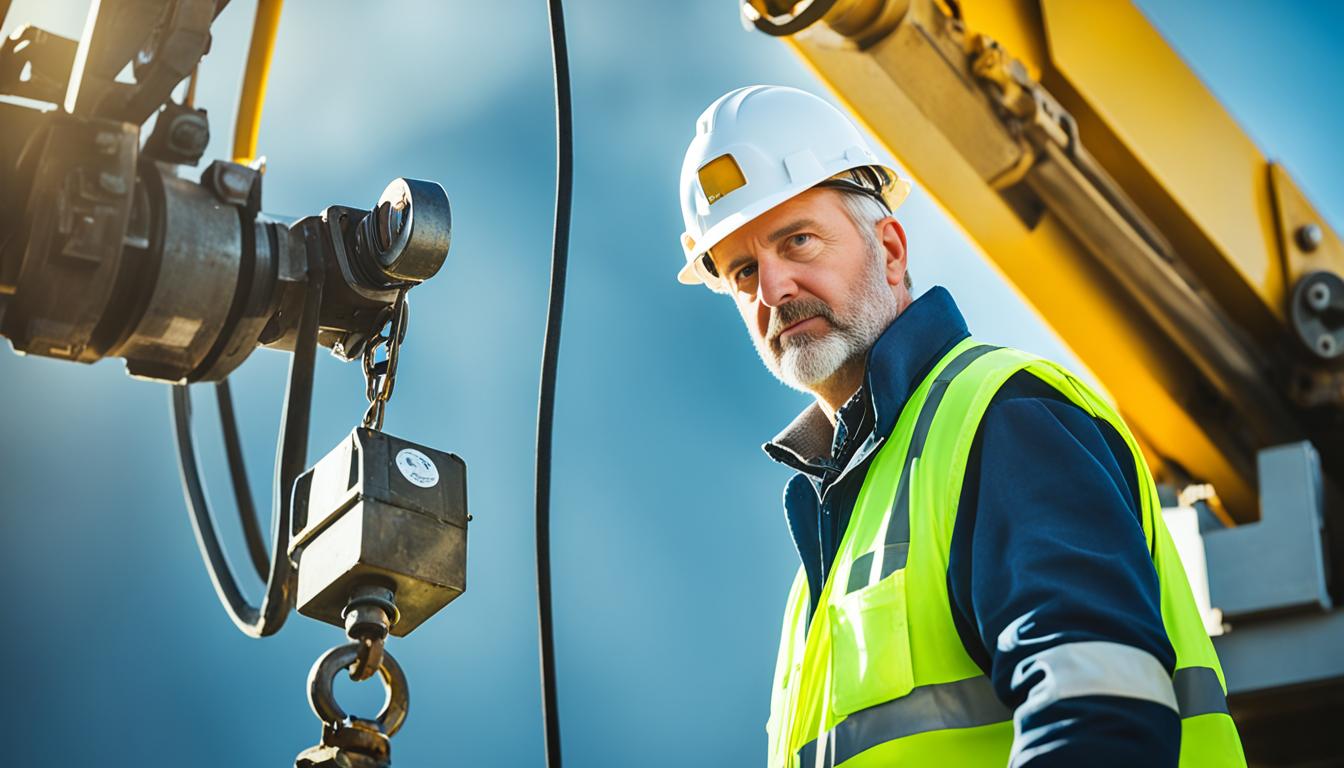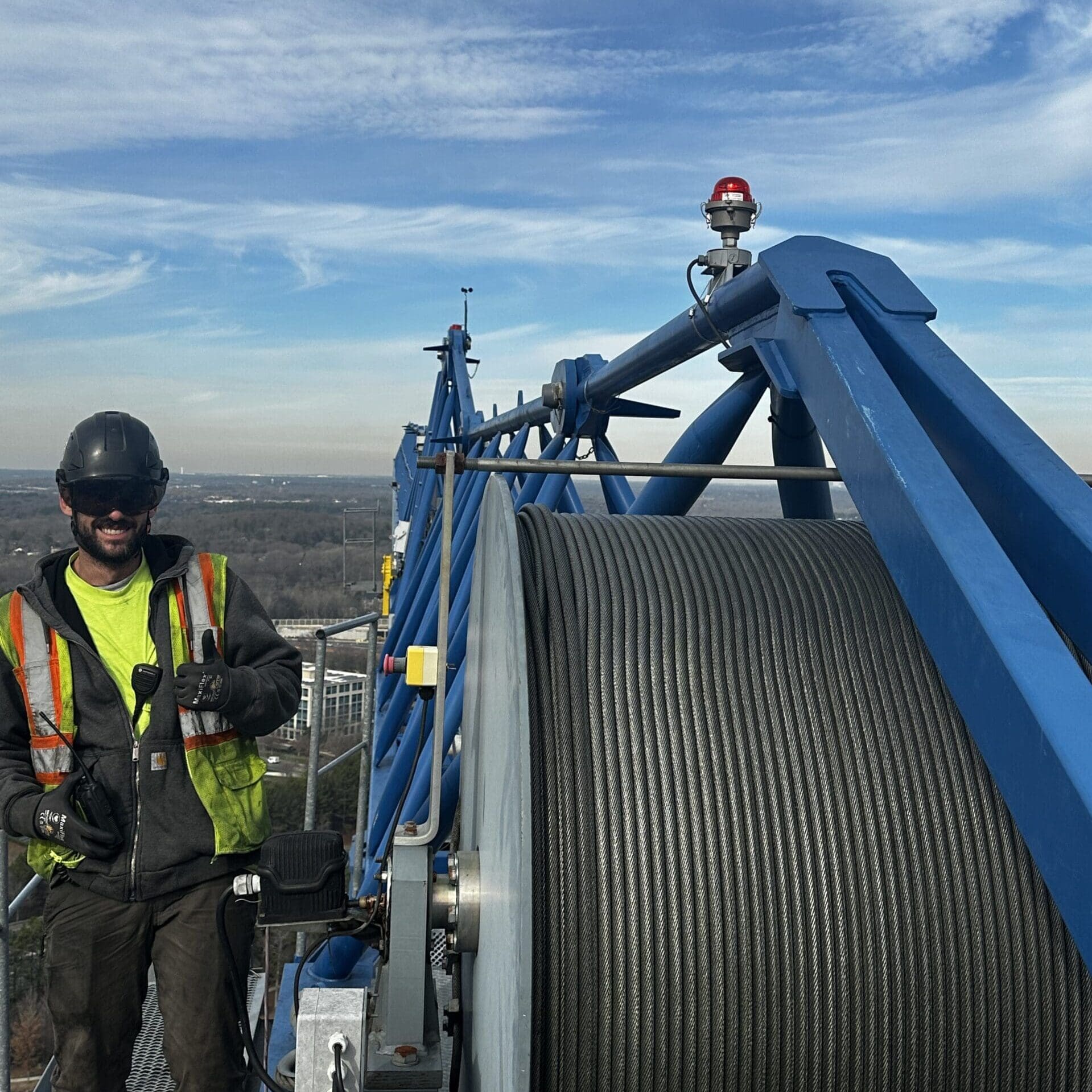Did you know missing out on crane inspections could lead to a 30% rise in accidents? This big number shows how crucial crane safety is in places like factories. So, doing yearly checks helps keep not just the machines safe, but also the people working around them, all while sticking to the tough OSHA crane standards.
Having certified crane inspectors look at your crane safety equipment does a lot. It spots dangers early and makes sure you’re following all the rules. Our team of Certified Safety Experts is all about top-quality crane inspection services. We check your gear thoroughly to make sure it’s safe and up to OSHA’s standards. Yearly crane inspections are a must, not just for keeping legal, but to keep everything running smoothly and safely.
Key Takeaways
- Regular inspections lower accidents by up to 30%.
- Yearly checks make sure you meet OSHA crane standards.
- Having certified crane inspectors is key for safety.
- Keeping your crane safety equipment in shape is crucial.
- Good crane inspection services are essential for staying safe and legal.
Why Annual Crane Inspections are Essential
Annual crane checks are very important for many reasons. They help with preventative safety measures. This means finding problems before they cause big trouble. They also make sure the equipment lasts longer by fixing small problems before they grow.
These checks also make it safer for workers. They find and fix dangerous situations. This makes the work site safer and lowers the chance of accidents.
Making sure cranes are checked each year is key for following the rules. Compliance with regulations is more than a must-do. It builds a culture where safety and dependability matter. This stops fines and makes your company better.
Data shows these inspections work. Companies that have regular checks have fewer incidents. These checks are critical for keeping everyone safe and the work running smoothly.
Comparing Before and After Annual Inspections:
| Aspect | Before Annual Inspections | After Annual Inspections |
|---|---|---|
| Safety Incidents | Higher Frequency | Substantial Reduction |
| Equipment Durability | Compromised Over Time | Enhanced Longevity |
| Compliance | Risk of Non-compliance | Ensured Compliance |
Crane Safety Regulations and Compliance
Following crane safety rules is vital for the safety of workers and construction sites. These rules help keep things both safe and legal.
OSHA Compliance: What You Need to Know
OSHA regulations for cranes outline rules for safety. They aim to lower risks and avoid accidents on sites.
Not obeying these OSHA guidelines could result in fines and halted work. Employers should check all equipment to be safe. They also must make sure workers know the latest safety rules.
Industry Standards for Crane Inspections
Besides OSHA, other groups lay out rules for crane checks and care. These help keep things running smoothly without dangers.
Crane checks are often yearly and are key for safety and durability. Finding problems early stops bigger risks.

| Organization | Inspection Frequency | Key Focus Areas |
|---|---|---|
| OSHA | Annual | Structural integrity, load testing, operator safety |
| ASME | Bi-Annual | Mechanical components, operational controls |
| ISO | Quarterly | Compliance with global standards, maintenance logs |
| ANSI | Annually | Electrical systems, emergency procedures |
Sticking to crane guidelines and meeting standards is key to job site safety and success.
Overhead Crane Maintenance: Best Practices
Keeping overhead cranes in good condition is key for safety and efficiency. Regular routine crane servicing and preventive maintenance are vital. They help the equipment live longer and reduce stoppages.
Follow specific maintenance tips to get the best out of your cranes. This includes quick fixes for common problems with crane repair services and careful diagnostic procedures.
Preventive Crane Maintenance Tips
Taking preventative steps can lower repair needs and make your crane last longer. Here are important tips:
- Conduct regular inspections to catch issues early.
- Keep all parts well-lubricated as part of regular service.
- Make sure your cranes are well-aligned to reduce wear.
- Always check safety features to meet safety laws.
Common Maintenance Issues and Solutions
Knowing and fixing common problems stops long breaks and costly fixes. Let’s look at some issues and how to solve them:
| Issue | Solution |
|---|---|
| Wire Rope Wear | Check and replace worn wire ropes often to stay safe. |
| Electrical Malfunctions | Use diagnostic procedures to find and solve power problems. |
| Misalignment | Adjust the crane to prevent damage, making it work better. |
| Brake Failures | Always check the brakes to keep things safe. |
Trained safety experts can handle crane repair services. They make sure your cranes are running smoothly and safely.
The Importance of Industrial Crane Certification
Heavy machinery must follow very high safety rules. Industrial crane certifications are key here. They make sure crane operators know how to work safely. Certified operators reduce the chance of accidents and make the workplace safer.
Operators go through special training to use cranes safely and efficiently. This training covers the newest safety rules and how to follow them. By having these certifications, they avoid problems, keep working, and save money.
Certified crane operators are very important, especially in jobs where mistakes are risky. Their training makes them ready for any situation. Thus, companies running smoothly and safely. Opting for crane certification is wise for both rules and a better work environment.
